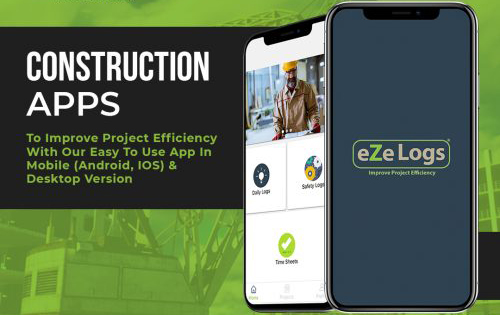Project Tracking Software is an invaluable asset for businesses to manage their projects and stay organized. It gives real-time insight into project progress, promotes collaboration among team members, and keeps businesses abreast of deadlines and budgets. In today’s fast-paced business climate, project-tracking software has become essential for companies to stay ahead of the competition.
It is essential for businesses as it streamlines project management processes, promotes communication and collaboration, and keeps companies on top of deadlines and budgets. By having accurate, up-to-date information about their projects, businesses can make informed decisions and take corrective action where needed.

This software also offers businesses numerous advantages. It helps them monitor project progress, identify potential issues and risks, and take corrective action before they become major issues.
It allocates resources more efficiently, optimizes project timelines, and boosts team productivity and efficiency. With the correct project tracking software in place, businesses can stay ahead of the competition and achieve their project goals more successfully.
Key Takeaways
- Project tracking software is an essential asset for businesses to manage their projects, stay organized, and stay ahead of the competition.
- It streamlines project management processes, promotes communication and collaboration, and keeps companies on top of deadlines and budgets.
- Key features of this software include time tracking, task management, resource allocation, and budget tracking, among others.
- Project tracking software can help businesses boost productivity and efficiency through better project planning, scheduling, communication, collaboration, visibility into projects and control of costs.
- When choosing the right project tracking software, businesses should consider identifying their specific needs, evaluating different software options, considering user experience and interface, and pricing and support options.
- To implement project tracking software successfully, businesses should set up the software, train their team, establish processes and workflows, and monitor progress regularly.
Use the software to manage the whole Project tracking process
Features of Project Tracking Software
Project tracking software comes with a range of features that make it a powerful tool for managing projects. Here are some of the key features of project tracking software:
Time tracking: This feature allows businesses to track the time spent by team members on each task. It helps businesses to accurately estimate the time required for each task and identify potential delays in project timelines.
Task management: This feature allows businesses to create and assign tasks to team members, set deadlines, and monitor progress. It helps businesses to ensure that tasks are completed on time and within budget.
Resource allocation: This feature enables businesses to allocate resources, including people, equipment, and materials, to specific tasks. It helps businesses to optimize their resources and ensure that they are being used effectively.
Budget tracking: This feature enables businesses to track project costs and expenses, including labor costs, material costs, and other expenses. It helps businesses to stay within their project budgets and identify potential cost overruns.
Other features of project tracking software may include project scheduling, collaboration tools, reporting and analytics, and integration with other business software applications. By using these features, businesses can effectively manage their projects, stay on top of their deadlines and budgets, and achieve their project goals more effectively.
How Project Tracking Software Helps You Stay Ahead of the Game
Project tracking software can give businesses an edge by offering several advantages. Here are some ways project tracking software can benefit businesses:
It allows businesses to plan and prioritize their projects more efficiently. It breaks complex tasks down into smaller tasks, sets deadlines, allocates resources – helps optimize timeliness, identifies potential delays, and takes corrective action for a smooth-running endeavor.
These softwares provides a platform for team members to communicate and collaborate on projects. It enables them to share project info, give feedback, and resolve issues more efficiently – helping businesses ensure everyone is on the same page and working towards similar project objectives.
It also provides real-time insight into project progress, allowing businesses to identify potential issues or risks sooner. Furthermore, it acts as a centralized platform for businesses to manage their projects, guaranteeing everyone has access to the same project information and is working towards similar objectives.
Project tracking can help businesses boost productivity and efficiency through better project planning, scheduling, communication, collaboration, visibility into projects and control of costs. It allows businesses to optimize resources more quickly, identify issues earlier, and guarantee projects are finished on schedule with budget constraints in mind.
Project tracking software can assist businesses in staying ahead of the competition by offering them the tools and features necessary for efficient project management. With project tracking software, businesses are able to accomplish their goals more rapidly and successfully than ever before.
Choosing the Right Project Tracking Software
Choosing the right project tracking software is essential to effectively manage your projects. Here are some factors to consider when choosing the right project-tracking software:

Identifying your specific needs: The first step in choosing the right project-tracking software is to identify your specific needs. Consider the size and complexity of your projects, the number of team members involved, and the features you require.
Evaluating different software options: Research and evaluate different project tracking software options. Consider the features offered, ease of use, and user reviews. Look for software that meets your specific needs and fits within your budget.
Considering user experience and interface: The user experience and interface are important factors to consider when choosing project tracking software. Look for software that is intuitive and easy to use, with a clean and user-friendly interface. The software should also provide the necessary features without being too complicated or overwhelming.
Pricing and support options: Consider the pricing and support options for the project tracking software. Look for software that fits within your budget and offers flexible pricing options. Also, consider the level of support offered, including customer service, training, and documentation.
Choosing the right project tracking software requires careful consideration of your specific needs, evaluating different software options, considering the user experience and interface, and pricing and support options. By taking the time to choose the right project-tracking software, businesses can effectively manage their projects and stay ahead of the game.
Implementing Project Tracking Software Successfully
Implementing project tracking software successfully requires careful planning and execution. Here are some key steps to implementing project tracking software successfully:
Setting up the software: The first step in implementing project tracking software is to set it up properly. This includes configuring the software to meet your specific needs, importing project data, and setting up user accounts and permissions.
Training your team: Once the software is set up, it is important to train your team on how to use it effectively. This includes providing training on the features and functionality of the software, as well as best practices for using the software to manage projects.
Establishing processes and workflows: To effectively use project tracking software, it is important to establish processes and workflows. This includes defining roles and responsibilities, setting up project templates, and establishing guidelines for how to use the software to manage projects.
Continuous monitoring and improvement: After the software is implemented, it is important to continuously monitor and improve your processes and workflows. This includes regularly reviewing project data and metrics, identifying areas for improvement, and making adjustments to your processes and workflows as needed.
Implementing project tracking software successfully requires careful planning, training, and ongoing monitoring and improvement. By following these steps, businesses can effectively use project tracking software to manage their projects and stay ahead of the game.
The Bottom line
In today’s fast-paced business world, staying ahead of the game requires effective project management. Project tracking software can help businesses achieve their project goals more efficiently and effectively. Here are some of the key benefits of using project tracking software:
- Better project planning and scheduling
- Improved communication and collaboration
- Greater project visibility and control
- Increased productivity and efficiency
By choosing the right project tracking software, implementing it successfully, and continuously monitoring and improving your processes and workflows, businesses can effectively manage their projects and stay ahead of the game.
Project tracking software is an essential tool for businesses looking to stay ahead of the competition. By leveraging the benefits of project tracking software, businesses can optimize their resources, improve project communication and collaboration, and achieve their project goals more efficiently and effectively.


